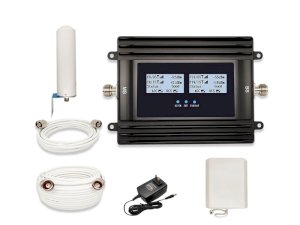There are many roads and locations with either poor mobile signal or no signal at all, and that doesn’t apply just to rural and faraway areas. Unfortunately, lack of signal on the road can result not just into being bored and possibly missing important calls and updates. It also results in a probability of having no access to navigation while driving, or, in case of emergency, inability to call for help or an ambulance. Autonomous and connected vehicles are meant to make traffic safer and reduce the possibilities of accidents, as well as cut some congestion, but their ability to do that depends on whether the vehicles are able to communicate to the infrastructure and each other and have uninterrupted access to the network.
But even if you’re not driving, areas with the lack of signal can be a big issue for you. Almost all of the current apps need mobile data to function and access it a lot, therefore having blind spots in connection influences their work. It can influence your own working process as well, and not in a good way. And in case some kind of business chooses a certain space to rent (or buy) and settle their office in, they would surely choose the area where the signal is good and stable all the time. Which will lead to imbalance and situations when rural and more troubled areas will have a weaker infrastructure. Besides, let’s not take possible emergencies out of consideration even when there’s no car traffic involved. And everyone still requires cell phone reception to be able to call for help anytime. So, having blind spots and regular loss of connection is not just inconvenient and annoying, but potentially very dangerous as well.
Basically, the biggest reason to why these areas with barely any signal even exist, apart from some possible topographical aspects, is the lack of cell base stations and cell towers. And, just as trivial as it sounds, placing base stations everywhere is quite an impossible goal simply because it costs a lot and it can be very hard to deploy them due to access issues. And, since most rural areas are sparsely populated, it’s not very cost-effective to build base stations in every possible place. All of that is, unfortunately, causing a visible digital divide between urban and rural (or just harder-to-access) areas.
Can anything be done to really solve these problems? The answer is yes. The technology and its development still never stops, and other technologies need to (and can) be better involved in increasing connectivity. Satellite broadband is one of these technologies. It can be used to supplement the existing way to create the connection, and do its part on the way to consistent and stable signal inside the limits of one particular country as well as worldwide.
Thanks to satellite technologies, network capacity has lately increased significantly, and it guarantees a very high-speed connection in any area within the satellite’s reach. Besides, technology also allows every kind of receiver to conveniently become smaller and smaller, and it will possibly lead to reducing costs on placing them in hard-to-access areas in the future, allowing them to have the excellent connection as well, no matter how populated the area is. And with the use of technology, this uncomfortable divide can be eliminated and forgotten about.







